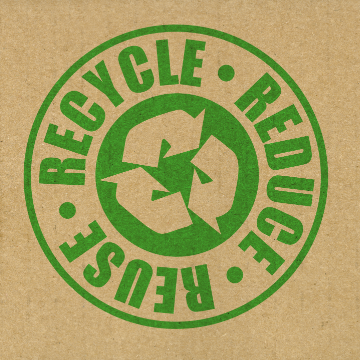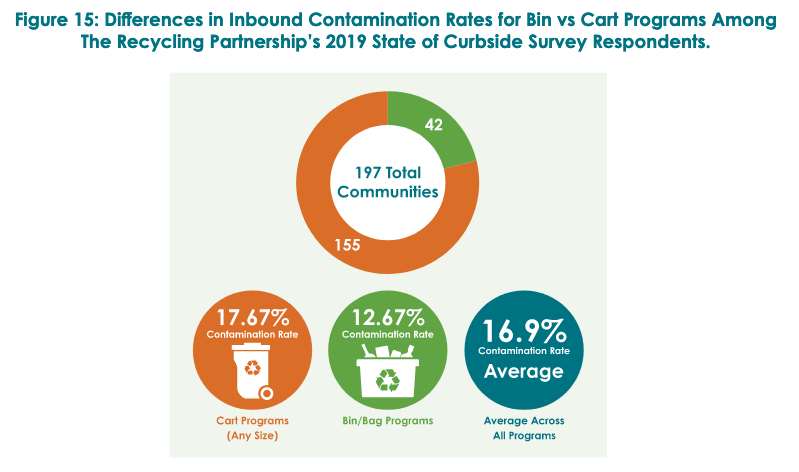Trash Talk: Single Stream Recycling's Hidden Costs
/“Reduce, Reuse, Recycle.” Growing up in the late 80’s and 90’s, this felt like it was practically a mantra among the environmentally-concerned. Chief among these it seemed was Recycle. I was lucky enough to belong to a household that valued doing our part to keep our planet clean. Having moved between different states it was always interesting to me how different communities handled this monumental task of collection, sorting and recycling, and I’ve seen all the tactics from multi-stream to uber convenient single stream, or bafflingly, no recycling at all.
Single Stream Recycling: Convenience at What Cost?
These days single stream recycling seems more or less normalized across the US. Single stream recycling is when all of the different recyclable goods are put in the same bin at the source (home, business, etc.). This is arguably the most convenient method for people to follow. In fact, surveys have shown that an overwhelming majority expressed they would not recycle if they had to sort items to different bins. Is convenience ever really worth it though? Just like a gas station egg salad sandwich, single stream recycling is of dubious quality at best.
The quality issue comes from the problem of contamination in the recycled goods. When all of the recycling goes in to one bin, then into the back of the recycling truck, it gets all mixed together. As these trucks continue through their routes, they continually compact the recycling down smaller and smaller. Imagine all of those glass bottles getting broken and crushed into shards, which then embed in the plastic and paper products. This makes it harder for the sorting machines, or even outright makes the products unusable for recycling. Plastic bottles and aluminum cans get squished so much that they can be confused for paper products by sorting machines, further complicating the process. The 2020 State of Curbside Recycling report shows that communities with single stream carts reported approximately 50% higher contamination rate than those with bin/bag programs.
This doesn’t even account for the amount of completely NON recyclable items that make their way to recycling facilities. Whether through ignorance or overzealousness, these items routinely end up in bins across the country. Even things like electronics, batteries, plastic bags or Styrofoam, which are recyclable but shouldn’t be going in the single stream bins - rather they should be brought to specific facilities that have the proper receptacles. Then there are the normally acceptable items that show up coated in (or containing!) grease, food, or cleaning products, which then can’t be recycled. All of these transgressions added together mean that although more people are recycling, less and less of it can actually be recycled.
Future Options
What are we to do? How do we proceed in a way that causes meaningful change in the way we process and minimize our waste? Recycling plastic (possibly the largest portion of America’s recyclables) often uses more resources than it might be worth, and China even stopped importing dirty recyclable material from the US, meaning more of our recycling merely ends up in a landfill anyhow. Some pundits propose removing plastics from our recyclables all together and focusing on more economically viable resources to recycle. For instance, metal recycling is highly regarded as a great service because it gives us cheaper metal products, and produces less total greenhouse gas emissions compared to smelting raw ores.
Another option to consider is to look at the current recycling paradigm and try to redesign it. As inconvenient as it may be, dual or multi-stream recycling results in better yields of actually recyclable materials. Furthermore, today’s recycling technology is much less limited than it used to be, and we have the ability to process more and more items. This means things like milk cartons or juice boxes, which are made from more than one material, can now be broken down to individual components and recycled effectively. Paper products can be recycled multiple times before fibers are too degraded, and glass and metals can practically be recycled indefinitely. Most places in America have access to these different recycling facilities, and all it requires is that you bring your recycling yourself.
Don’t forget the other “R”s in the mantra either. Reducing our dependence on single use plastics can have a major impact by removing that stream of hard to recycle materials. Reusing things is also a great way to impact our waste stream, but it is important to think about the extent of that reuse and the end of life impact of reused goods. That cute wall planter made from soda bottles you found on Pinterest might keep the plastic out of a landfill for a year or two, but will it realistically stay in use for a significant time? Instead consider buying used items over new and buying reusable containers and grocery bags. There are even plenty of building materials available that are reused or recycled, and the great thing about that is that these otherwise problematic materials serve a new purpose and remain in use for the life of the building.
Now don’t get me wrong, recycling is already effective, but there is always room for improvement and what needs to be done to that end is further education and action of the people. Find where your recycling centers are near you at Earth 911 or Be Recycled and start sorting your own materials. Start pushing for local changes towards multi stream recycling like some communities around the nation and continue teaching your neighbors and community how to recycle better. We can continue to improve on our methods and reflect on the lessons we’ve learned from the previous decades, and make a difference where it counts.
Multi-bin recycling results in more usable material for recycling.
These cute little monsters made from plastic bottles won’t stay out of the landfill forever.











